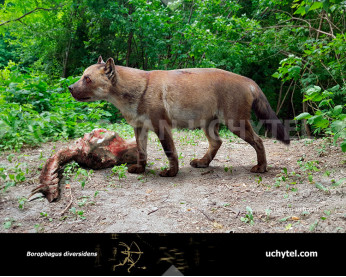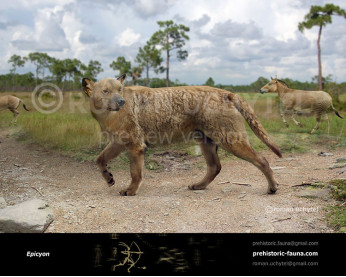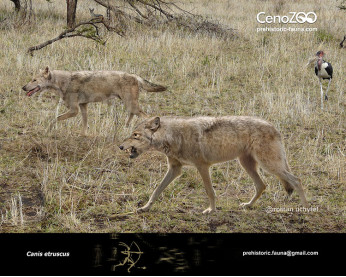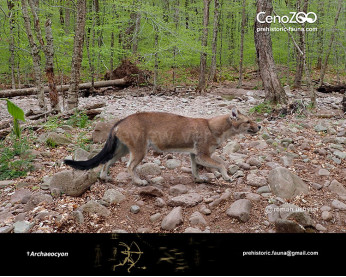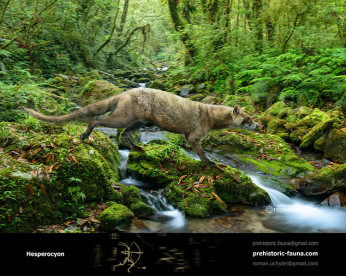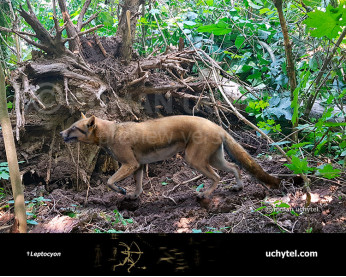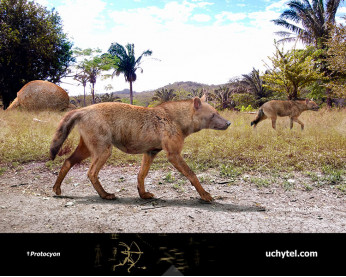Aelurodon taxoides
164164Aelurodon (Aelurodon Leidy, 1858)
Order: Carnivora
Family: Canidae
Temporal range: during the Miocene (North America)
Dimensions: length - 1,5 m, height - 75 сm, weight - 40 kg
A typical representative: Aelurodon taxoides Hatcher, 1893
Aelurodon is an extinct canine genus of the subfamily Borophaginae which lived from the Barstovian land mammal age (16 Mya) of the middle Miocene to the Clarendonian age of the late Miocene (9 Mya). Aelurodon taxoides existed from 13.6-5.330 Mya (8.27 million years). Fossil specimens were uncovered in Florida, south and north Texas, New Mexico, Kansas, and the bay area of California. Two specimens had an estimated body mass of 56 kg and 49 kg . The name Aelurodon was given by Joseph Leidy in 1858. The smaller Aelurodon lineage evolved teeth adapted to a more purely carnivorous (hypercarnivorous) diet, a trend consistent with other borophagines.Some specimens of the largest species, Aelurodon taxoides, reached the size of a tiger.
Aelurodon (Aelurodon Leidy, 1858)
Order: Carnivora
Family: Canidae
Temporal range: during the Miocene (North America)
Dimensions: length - 1,5 m, height - 75 сm, weight - 40 kg
A typical representative: Aelurodon taxoides Hatcher, 1893
Aelurodon is an extinct canine genus of the subfamily Borophaginae which lived from the Barstovian land mammal age (16 Mya) of the middle Miocene to the Clarendonian age of the late Miocene (9 Mya). Aelurodon taxoides existed from 13.6-5.330 Mya (8.27 million years). Fossil specimens were uncovered in Florida, south and north Texas, New Mexico, Kansas, and the bay area of California. Two specimens had an estimated body mass of 56 kg and 49 kg . The name Aelurodon was given by Joseph Leidy in 1858. The smaller Aelurodon lineage evolved teeth adapted to a more purely carnivorous (hypercarnivorous) diet, a trend consistent with other borophagines.Some specimens of the largest species, Aelurodon taxoides, reached the size of a tiger.


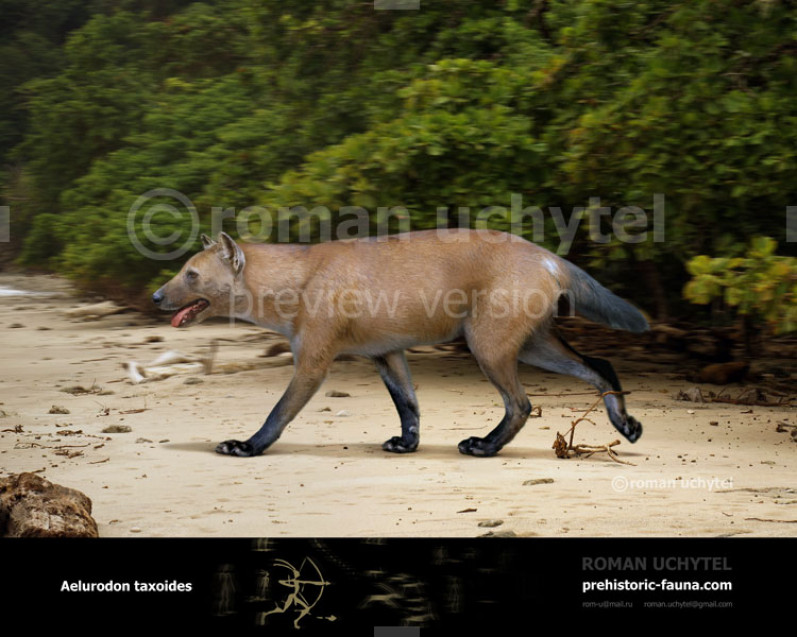
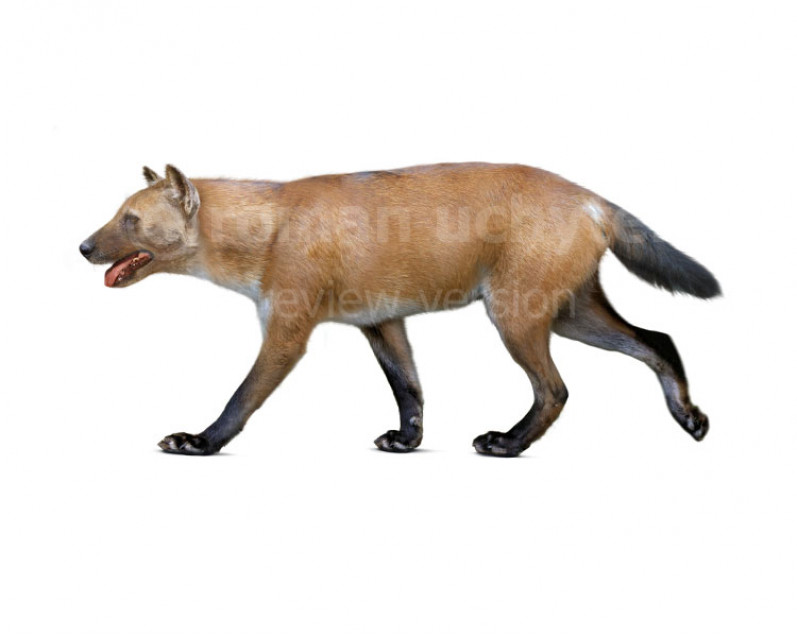
-797x638.jpg)
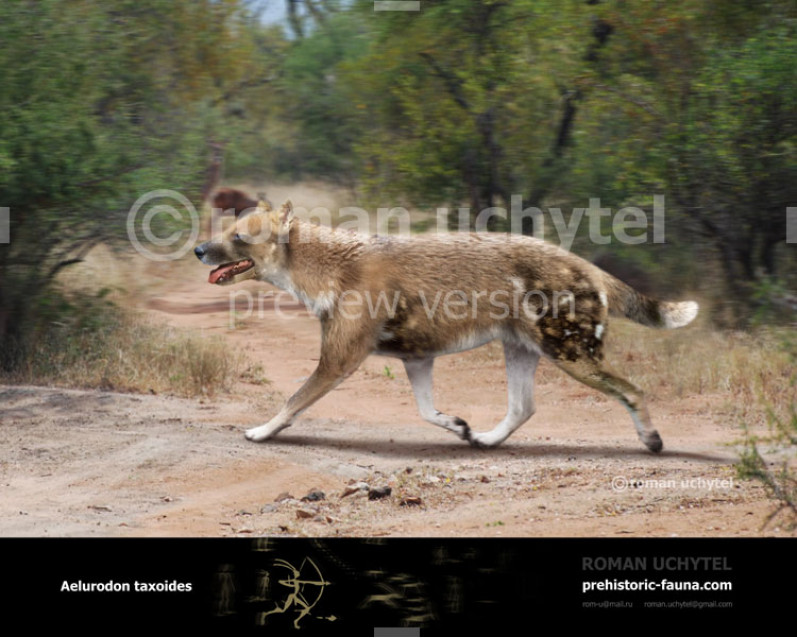



-70x56.jpg)

